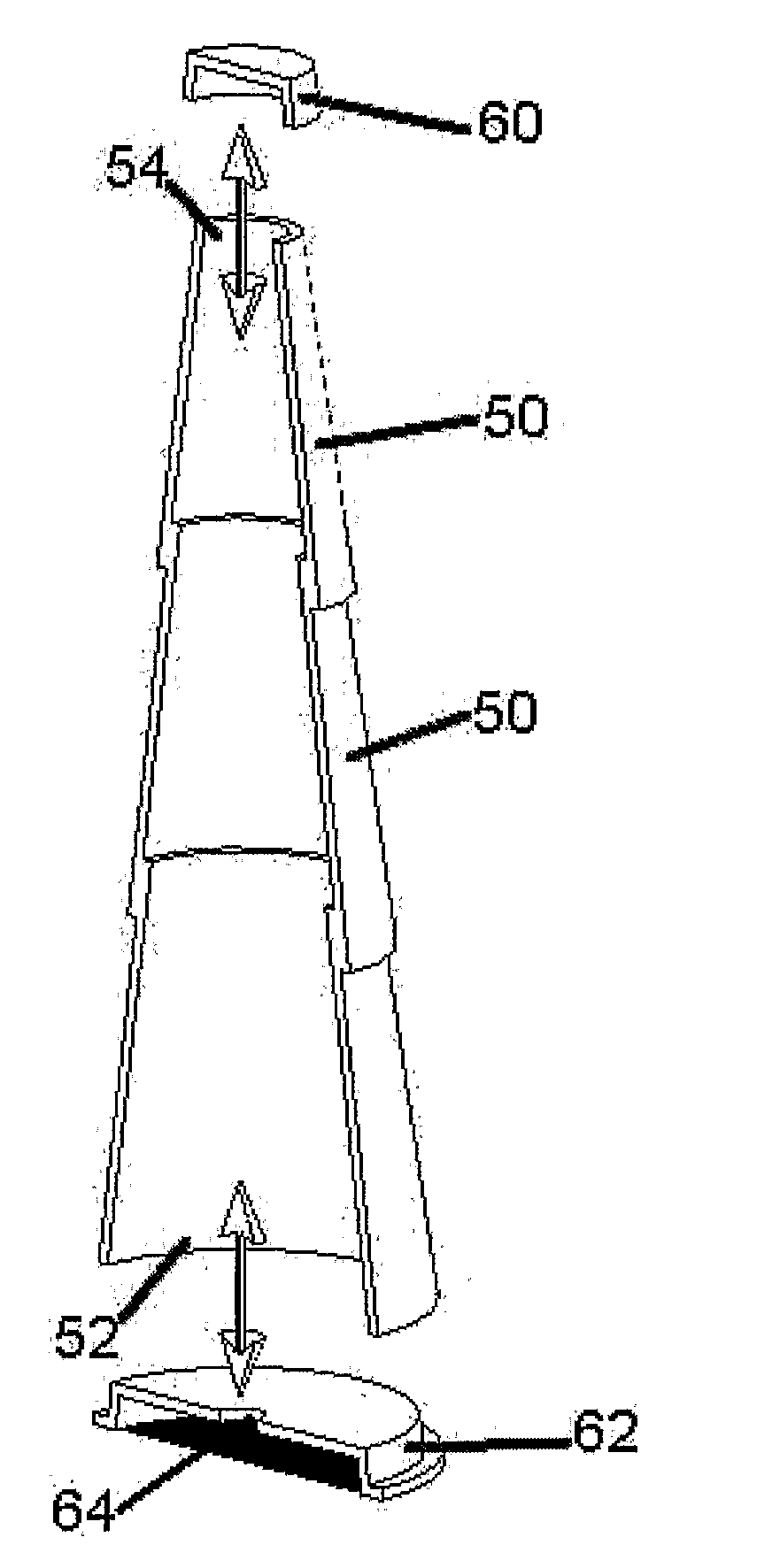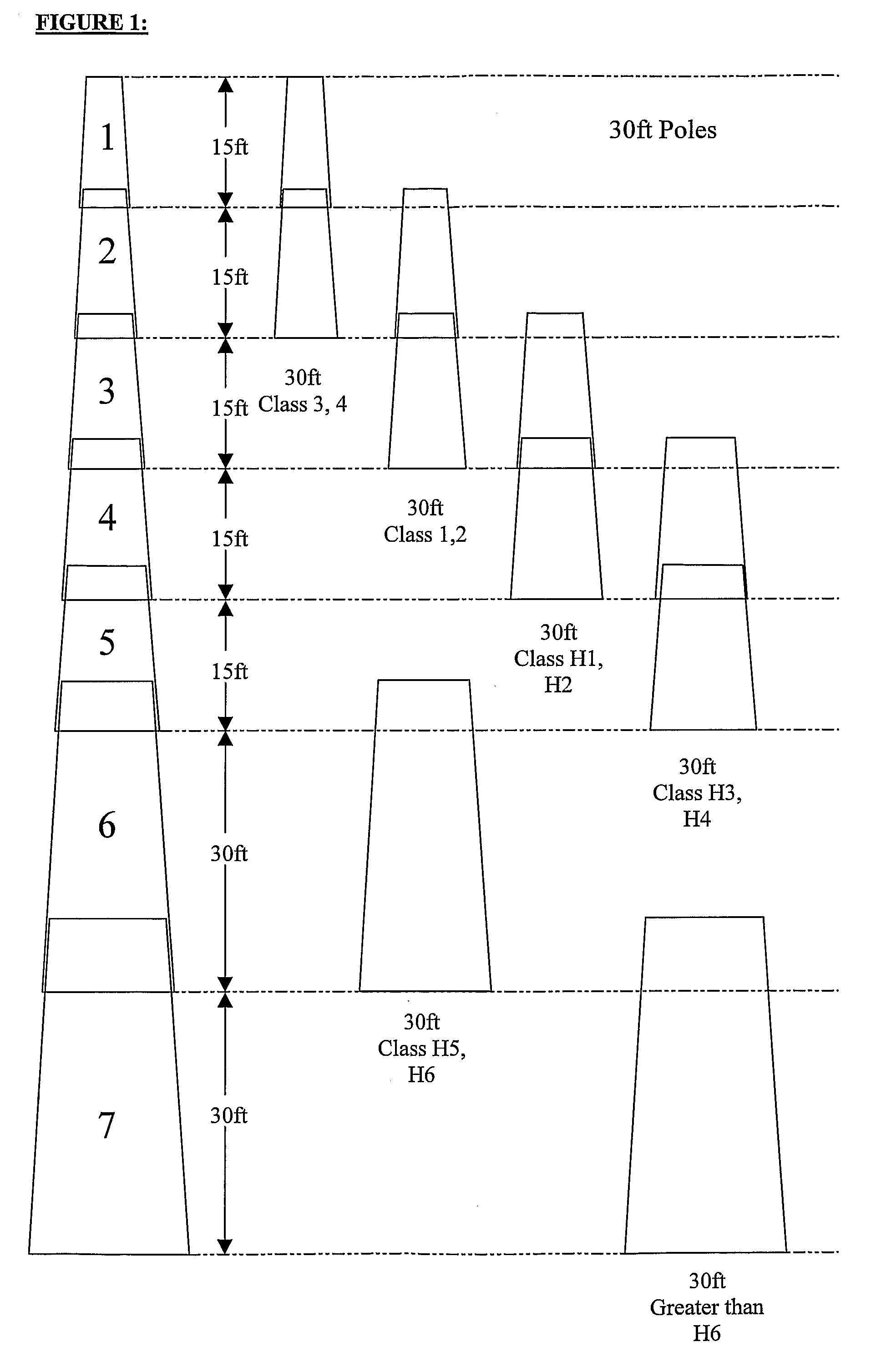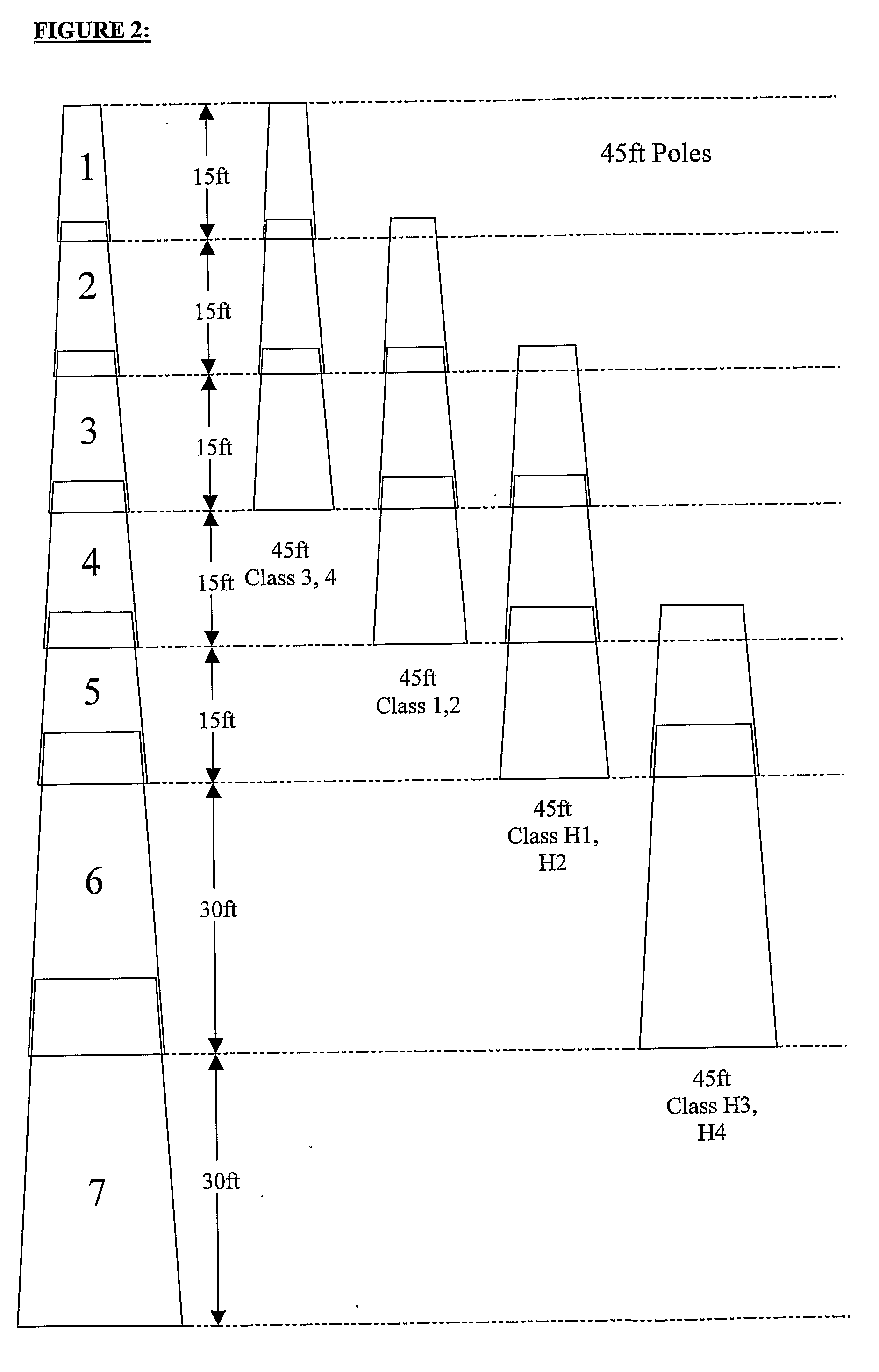Method of modular pole construction and modular pole assembly
a technology of modular poles and pole assemblies, which is applied in the direction of manufacturing tools, building repairs, transportation and packaging, etc., can solve the problems of not addressing other structural issues such as height, strength, stiffness, durability and other performance considerations, and achieves the effect of convenient storage and transportation and easy access to the structural properties of the modules
- Summary
- Abstract
- Description
- Claims
- Application Information
AI Technical Summary
Benefits of technology
Problems solved by technology
Method used
Image
Examples
Embodiment Construction
[0053]The following description is of a preferred embodiment.
[0054]The present invention pertains to an elongated modular pole structure or modular pole assembly or system comprising two or more than two hollow tapered modules. Each module has a first end and an opposed second end with the cross-sectional area of the second end being less than the cross-sectional area of the first end. The second end of one module is mated with the first end of a second module to form the pole structure.
[0055]At least two of the modules may have different structural properties, such that poles having desired structural properties can be constructed by selectively combining modules having differing structural properties. The modules may have different flexural strength, compressive strength, resistance to buckling, shear strength, outer shell durability or a mixture of different structural properties. The height of the structure can also be varied simply by adding or removing modules from the stack. ...
PUM
| Property | Measurement | Unit |
|---|---|---|
| lengths | aaaaa | aaaaa |
| angles | aaaaa | aaaaa |
| angles | aaaaa | aaaaa |
Abstract
Description
Claims
Application Information
 Login to View More
Login to View More - R&D
- Intellectual Property
- Life Sciences
- Materials
- Tech Scout
- Unparalleled Data Quality
- Higher Quality Content
- 60% Fewer Hallucinations
Browse by: Latest US Patents, China's latest patents, Technical Efficacy Thesaurus, Application Domain, Technology Topic, Popular Technical Reports.
© 2025 PatSnap. All rights reserved.Legal|Privacy policy|Modern Slavery Act Transparency Statement|Sitemap|About US| Contact US: help@patsnap.com



